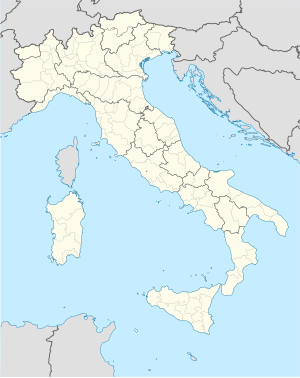
Publius Licinius Egnatius Gallienus was Roman emperor with his father Valerian from 253 to 260 and alone from 260 to 268. He ruled during the Crisis of the Third Century that nearly caused the collapse of the empire. He won numerous military victories against usurpers and Germanic tribes, but was unable to prevent the secession of important provinces. His 15-year reign was the longest in half a century.
The 270s decade ran from January 1, 270, to December 31, 279.

Year 271 (CCLXXI) was a common year starting on Sunday of the Julian calendar. At the time, it was known as the Year of the Consulship of Aurelianus and Bassus. The denomination 271 for this year has been used since the early medieval period, when the Anno Domini calendar era became the prevalent method in Europe for naming years.

Aurelian was a Roman emperor who reigned from 270 to 275 during the Crisis of the Third Century. As emperor, he won an unprecedented series of military victories which reunited the Roman Empire after it had nearly disintegrated under the pressure of barbarian invasions and internal revolts. Born in modest circumstances, most likely in Moesia Superior, he entered the Roman army in 235 and climbed up the ranks. He went on to lead the cavalry of the emperor Gallienus, until Gallienus' assassination in 268. Following that, Claudius Gothicus became emperor until his own death in 270. Claudius' brother Quintillus then ruled for three months, before Aurelian took the empire for himself.
The Battle of Naissus in 268 or 269 was the defeat of a Gothic coalition by the Roman Empire under Emperor Gallienus and the future Emperor Aurelian near Naissus (Niš). The events around the invasion and the battle are an important part of the history of the Crisis of the Third Century.

The Battle of Lake Benacus was fought along the banks of Lake Garda in northern Italy, which was known to the Romans as Benacus, in 268 or early 269, between the army under the command of the Roman Emperor Claudius II and the Germanic tribes of the Alamanni and Juthungi.

Ticinum was an ancient city of Gallia Transpadana, founded on the banks of the river of the same name a little way above its confluence with the Padus (Po).

This is a chronology of warfare between the Romans and various Germanic peoples. The nature of these wars varied through time between Roman conquest, Germanic uprisings, later Germanic invasions of the Western Roman Empire that started in the late second century BC, and more. The series of conflicts was one factor which led to the ultimate downfall of the Western Roman Empire in particular and ancient Rome in general in 476.

The Juthungi were a Germanic tribe in the region north of the rivers Danube and Altmühl in what is now the modern German state of Bavaria.

The Aurelian Walls are a line of city walls built between 271 AD and 275 AD in Rome, Italy, during the reign of the Roman Emperor Aurelian. They superseded the earlier Servian Wall built during the 4th century BC.
The Battle of Placentia was fought in 271 between a Roman army led by Emperor Aurelian and the Juthungi tribe, near modern Piacenza. The result was Juthungian victory.
In the Battle of Châlons, fought in 274 on the site of modern Châlons-en-Champagne, France, Roman Emperor Aurelian defeated Emperor Tetricus I of the Gallic Empire, whose territories were rejoined with the Roman Empire after fourteen years of separation.
The Battle of Fano also known as the Battle of Fanum Fortunae was fought in 271 between the Roman and the Juthungian armies. The Romans led by Emperor Aurelian, were victorious.

The Palmyrene Empire was a short-lived breakaway state from the Roman Empire resulting from the Crisis of the Third Century. Named after its capital city, Palmyra, it encompassed the Roman provinces of Syria Palaestina, Arabia Petraea, and Egypt, as well as large parts of Asia Minor.

Zabdas was a 3rd-century Syrian general who led the forces of Empress Zenobia of Palmyra during her rule as regent of her son Vaballathus and her subsequent rebellion against the Roman Emperor under the short-lived independent Palmyrene Empire. He led Palmyra's expeditions in the middle east which included annexing territory spanning from Roman Egypt to Asia Minor.
Cannabaudes or Cannabas was a third-century leader of the Gothic tribe of the Tervings, who died in a battle against the Roman emperor Aurelian.
The Siege of Tyana occurred in 272 CE. The forces of the Roman Emperor Aurelian were seeking to conquer the Palmyrene Empire.

The Palmyrene invasion of Egypt occurred in the summer, or possibly in October, of 270 AD when the forces of Queen Zenobia of Palmyra, led by her general Zabdas and aided by an Egyptian general named Timagenes, invaded and subsequently annexed Egypt, which was under control of the Roman Empire at the time.

The barbarian invasions of the third century (212-305) constituted an uninterrupted period of raids within the borders of the Roman Empire, conducted for purposes of plunder and booty by armed peoples belonging to populations gravitating along the northern frontiers: Picts, Caledonians, and Saxons in Britain; the Germanic tribes of Frisii, Saxons, Franks, Alemanni, Burgundians, Marcomanni, Quadi, Lugii, Vandals, Juthungi, Gepids and Goths, the Dacian tribes of the Carpi and the Sarmatian tribes of Iazyges, Roxolani and Alans, as well as Bastarnae, Scythians, Borani and Heruli along the Rhine-Danube rivers and the Black Sea.












